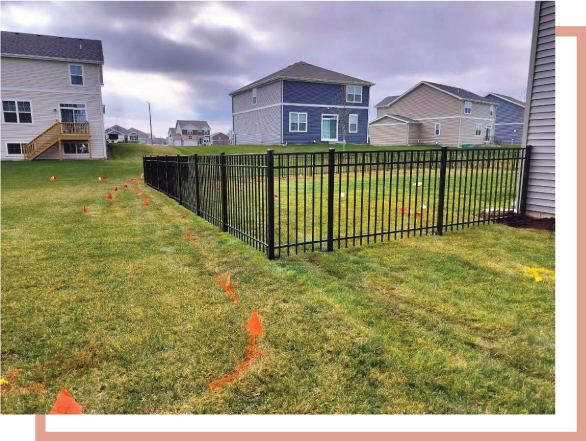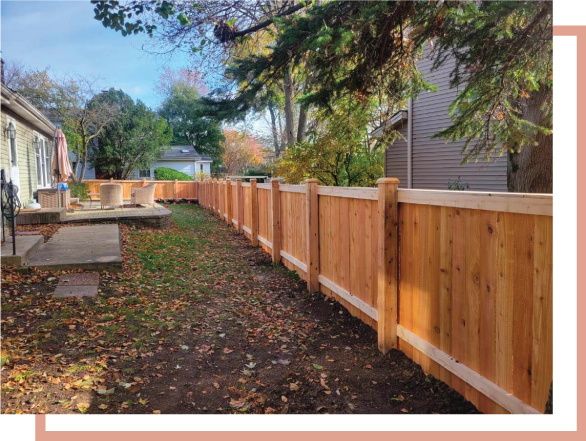Thinking of installing a fence? Before you purchase the materials, make sure to check your property lines. Not only will this information help you avoid the headache of misplacing your fence in your neighbor’s yard, but it will also save you from legal disputes that would cost way more than a new fence.
How to Find Property Lines
Survey
Before installing your new fence, a fence company will require proof of an up-to-date, fully filled-out survey before beginning the installation process. A survey is a rendering of your property lines and measurements. You can obtain a survey in one of three ways:
- Home Closing Paperwork: To become a homeowner, many lenders and insurance companies require that you have a survey drawn up. Just make sure it’s up-to-date and complete.
- A Professional Surveyor: If you cannot locate the paperwork from your home closing, you can hire a professional surveyor to draw up a new survey to ensure the accuracy of your fence placement. An experienced surveyor marks your property lines using accurate calculations, pins, and flags. The service fee typically costs $500 and guarantees you’ll have precise measurements to present to your fencing company.
- Contact The Previous Homeowner: You can reach out to the previous owner of your home to see if they still have a record of the property survey. Again, just make sure the document is up-to-date and complete.

Check Your Deed
If you own property, you likely have a document called a deed that states the property’s size and boundaries. To ensure the information in the deed is correct, you can use the landmarks described in the document to measure the distance from them to the property lines. Then, mark each corner of your property with a stake or another marker, and measure the distance between each stake. This will help you confirm that the lines you’ve measured match the description in your deed. By doing this, you can make sure you don’t accidentally encroach on your neighbor’s property.
Plat Map
When a neighborhood is developed, a builder creates a map that identifies each lot with a number. This map is called a plat map and is drawn up by a civil engineer. You can obtain a copy of your plat map from your local city planning office, your builder, or online.
Check County Website
Certain survey-assessing companies have online mapping tools you can access for free. You can use the maps to locate the boundary lines of your property based on fixed landmarks in the area, such as the street or mailbox. Measure the distance from each landmark to the property lines using a tape measure.
County Office
You can ask to see maps available to the public that include the neighborhood and street name where your home is located. Request a copy of any maps that clearly show the calculations and dimensions of your property lines. You can use the maps as a reference when measuring the boundary lines on each side of your property.
Do It Yourself
If you’re up for the challenge, you can locate your property lines with the following materials:
- Your home deed
- A compass
- A calculator
- A tape measure
To determine property lines, don’t rely on your neighbor’s fence or hedge. Use a starting point, a compass, and a tape measure to mark points and determine the lines. Avoid encroachment penalties, disputes, and lawsuits by being accurate.
Enjoy That New Fence Feeling
Give Northwest Cedar Fence a call when you need a professional fence installation for cedar, vinyl, aluminum, or a privacy fence. We’ll get the permit and handle the quote and installation in no time!
Upgrade your yard with a cedar fence by calling us at (815) 836-8731, or schedule an appointment online.




